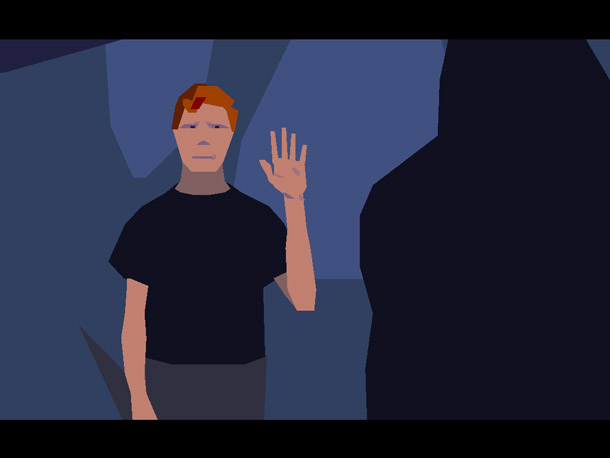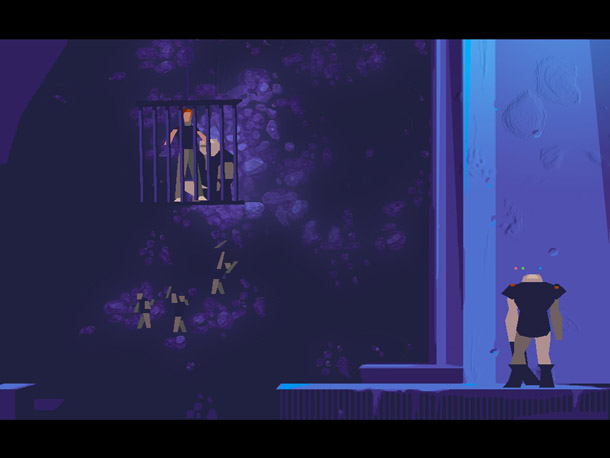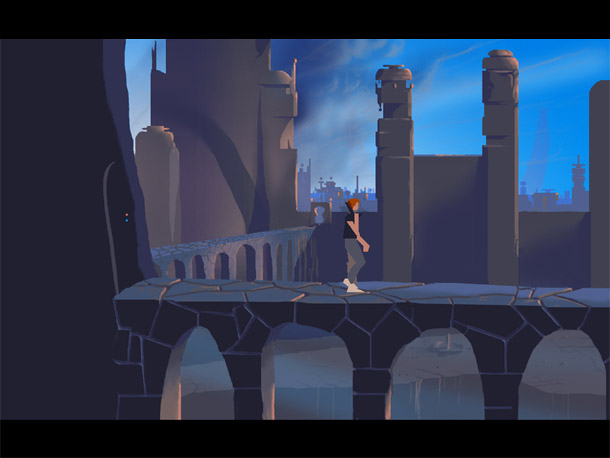
My only previous intersection with Another World was when it was released on the Super NES as Out of this World. At that time Eric Chahi’s game, already in one of its several reincarnations, was completely different and original to everything I had played on home consoles. It wasn’t a true platformer, it wasn’t a true adventure game, and so I abandoned it after a few hours of frustration. Consoles just weren’t ready for that kind of game; the industry wasn’t mature enough yet.
It’s been several years since then and not only has the industry matured, but thanks to the iPad some of the classic experiences that were ahead of their time are now much more viable and welcome. With the release of Another World‘s 20th anniversary edition, I’ve finally been able to get back into the game that I left in my SNES so long ago. For the most part, it was well worth it.

Anytime a game is translated to the iPad, the biggest concern is always the controls. Adventure games seem like a natural fit for the device, as the point-and-tap interface mirrors how we might use a mouse. With Another World being a sort of hybrid, it requires extremely precise controls. The developers chose to replace button presses with finger swipes, taps, and double taps… and it just felt awkward. I spent much of the first hour or so getting used to what should have been simple motions, often running off of cliffs or falling into pits because I accidentally double-tapped. It made it difficult to enjoy the early portion of the game, and it wasn’t until some point midway through that I was able to forgive the controls and continue on. The game really deserved a new control scheme, but that may have predicated a major overhaul of the its gameplay to do so. There’s an option for an on-screen directional pad, but it’s not any better. I died over, and over, and over again.
Thankfully, the game’s forgiving mechanic allowed for my many deaths to have little meaning. Another World is as much a strategy game as it is an adventure. Each puzzle or situation has a specific solution, and if I didn’t solve it correctly the first time I was able to tweak my strategy — dying several times in the process — until I finally got it. Some of the puzzles were frustrating at first, but the ebb and flow of the difficult and easy kept the experience interesting and fresh in each room.

The rest of the game has some wonderful improvements. With just a swipe of my fingers I was able to switch the visuals from the classic PC version to the improved 15th anniversary’s higher resolution vectors and hand-drawn background. It translated beautifully to the iPad’s shiny screen. It was really interesting to see how slight vector animations could translate emotion, fear, and even friendship. Much of the original audio remains as well, with sound effects being important to the problem-solving process. It’s a translation that works extremely well visually.
Another World is a series of interesting puzzles strung between running and jumping over beautiful pits. The art house visuals and audio touches translate extremely well on the iPad, and the auto save allows for quick romps of puzzle-solving as time permits. It’s still an enjoyable experience, but one that is hampered with its awkward-feeling controls.
This review of Another World is based on a copy of the game supplied to SideQuesting by its publisher BulkyPix.


No Comments